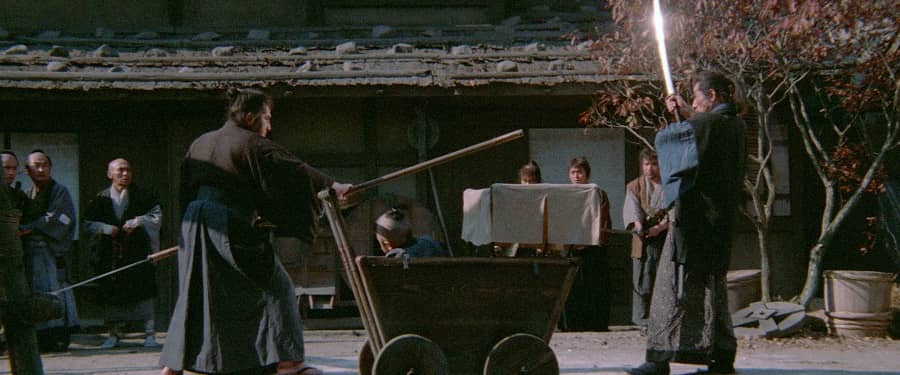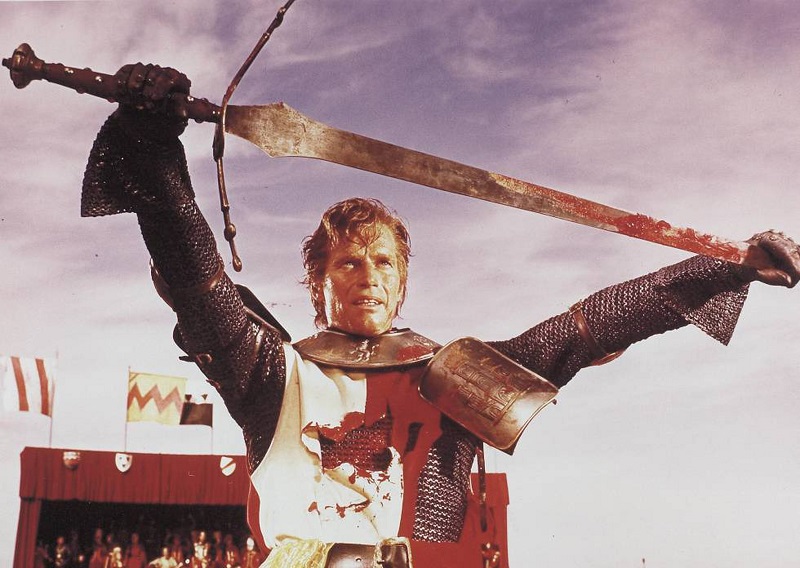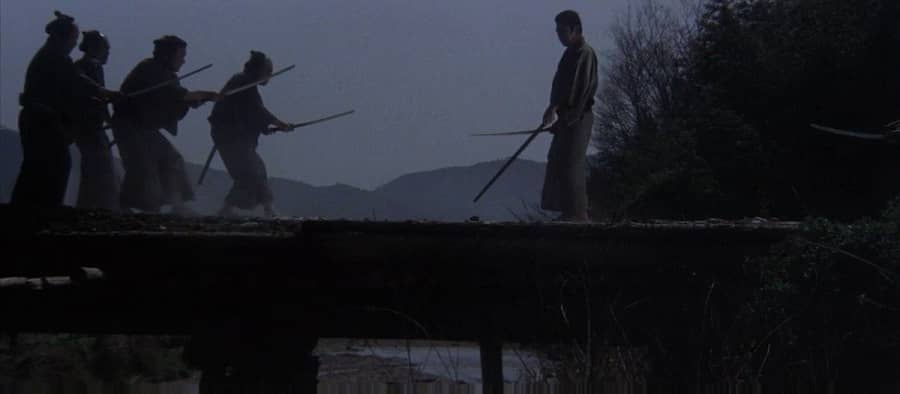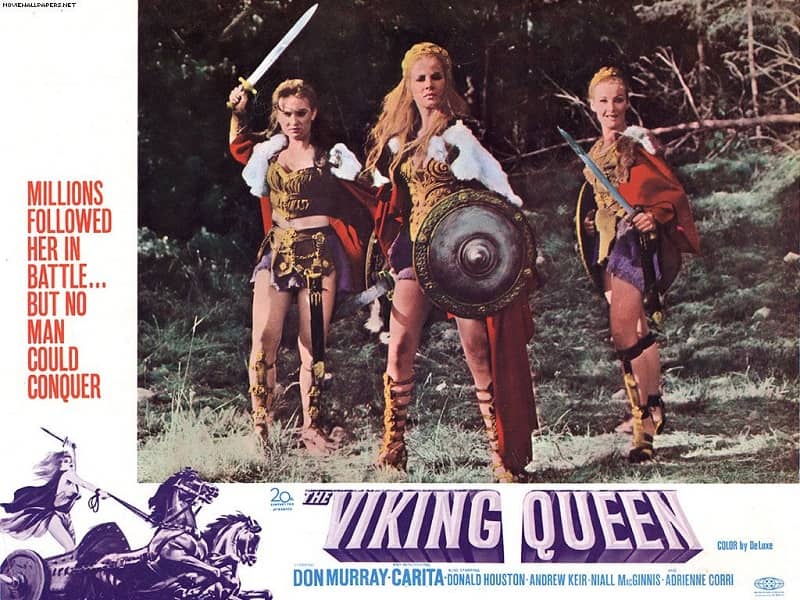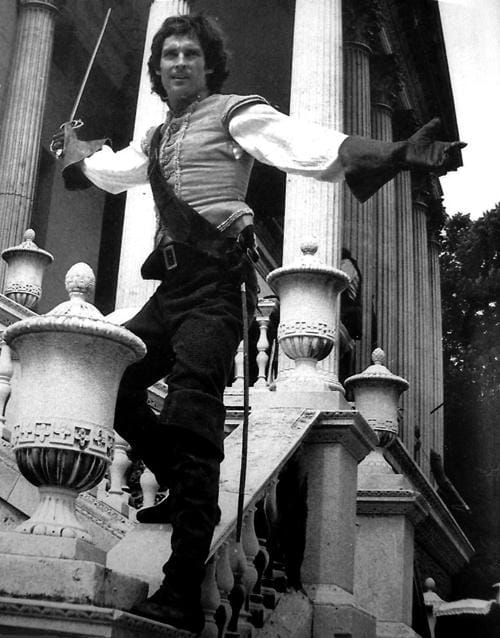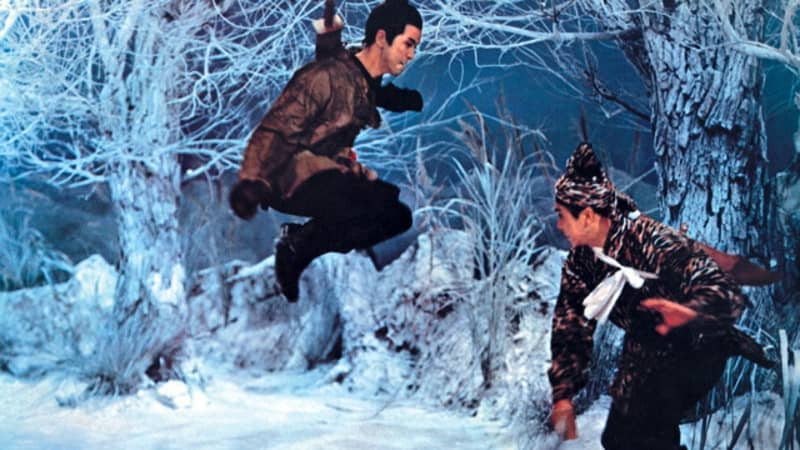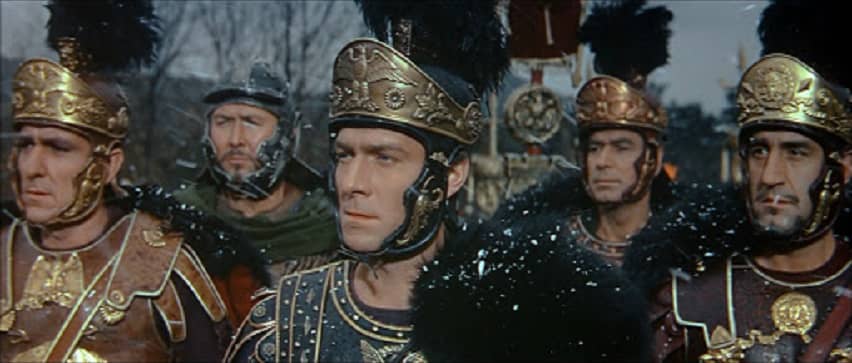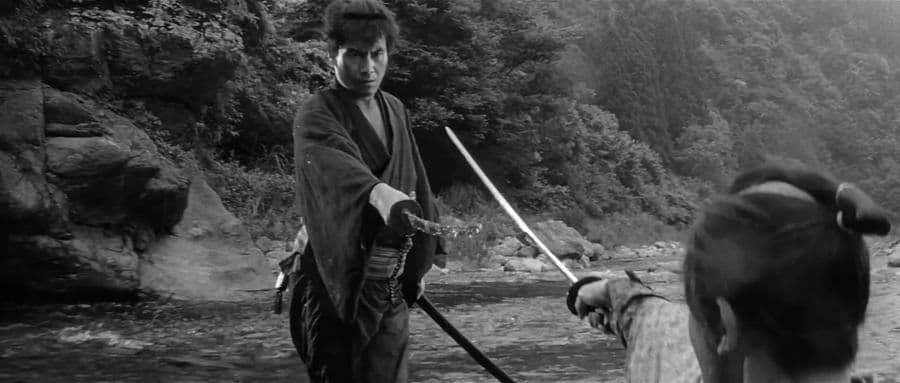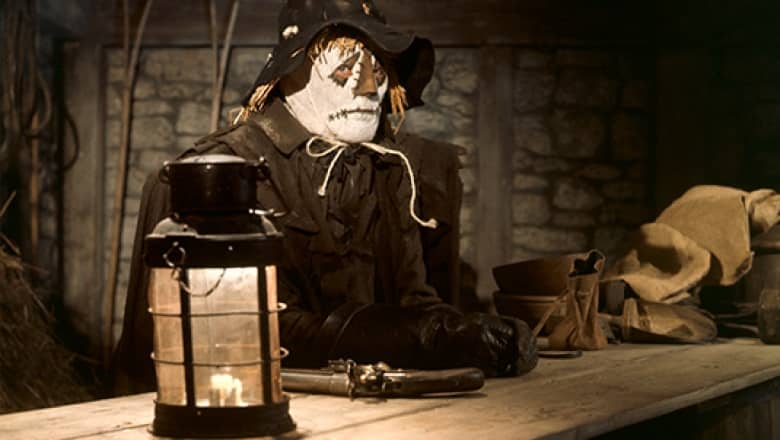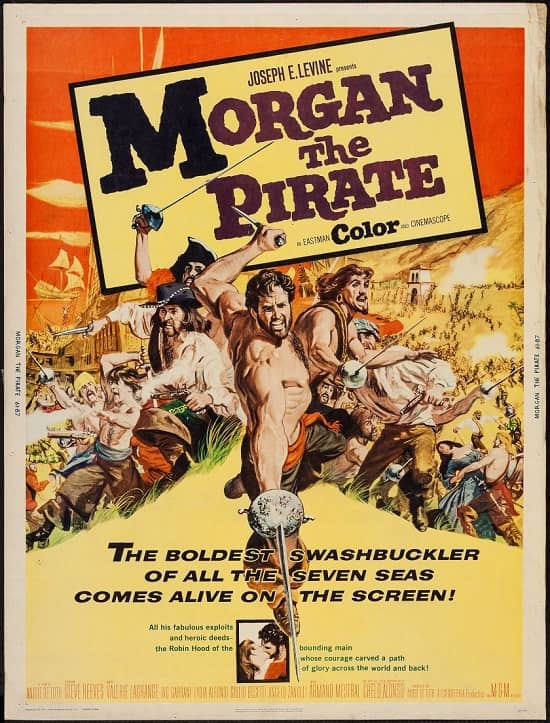Ellsworth’s Cinema of Swords: Lone Wolf and Cub, Part 1
Lone Wolf and Cub 1: Sword of Vengeance (Japan, 1972)
Lone Wolf and Cub, the celebrated samurai manga series by writer Kazuo Koike and artist Goseki Kojima, began in 1970 and, wildly popular, eventually ran to many thousands of pages and was adapted to both film and television. However, it was virtually unknown in America and Europe until 1980 when the compilation Shogun Assassin was released, drawing on the first two motion pictures. But Shogun Assassin emphasized the series’ brutal violence and was regarded by most in the west as trash cinema, a reputation that was unchanged until 1987 when the Lone Wolf and Cub manga series was finally republished in the US and UK by First Comics. With covers and endorsements by then-fan-favorite Frank Miller, the comics were widely acclaimed, and the movies finally found release in the United States and Europe in their original forms.
This week we’re taking a look at the first three Lone Wolf movies from 1972-73. Despite their level of gore and carnage, which was considered extreme at the time, these are serious films, adapted from the manga by Kazuo Koike himself. Their success is all the more remarkable because star Tomisaburo Wakayama, middle-aged and heavy, looks so little like a samurai matinee idol. But Wakayama had been a dedicated martial artist before he became an actor, and his surprising athleticism adds depth and credibility to the role.
